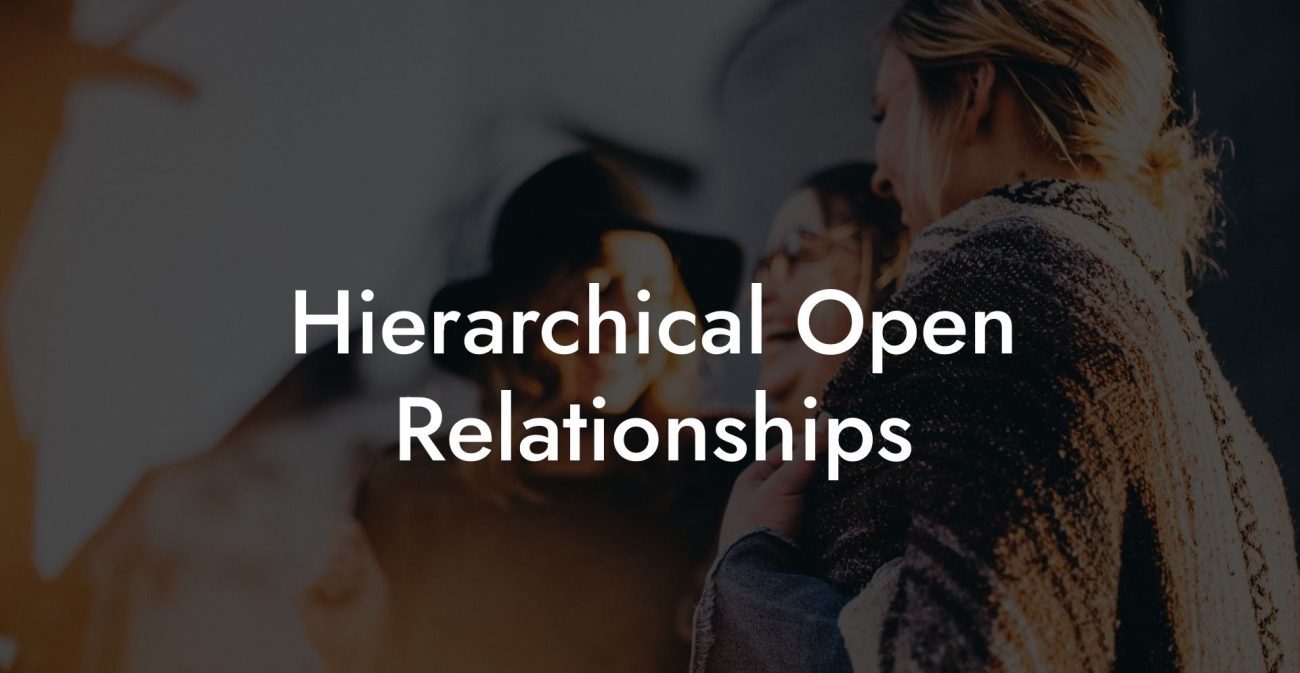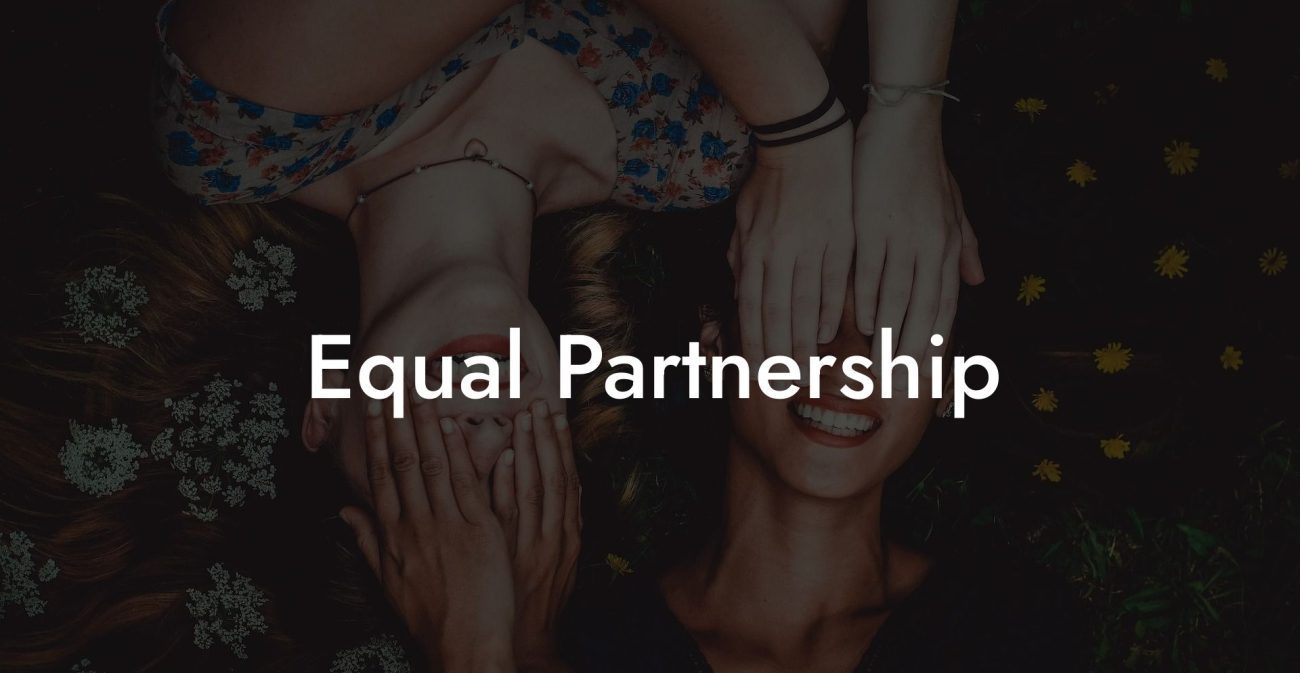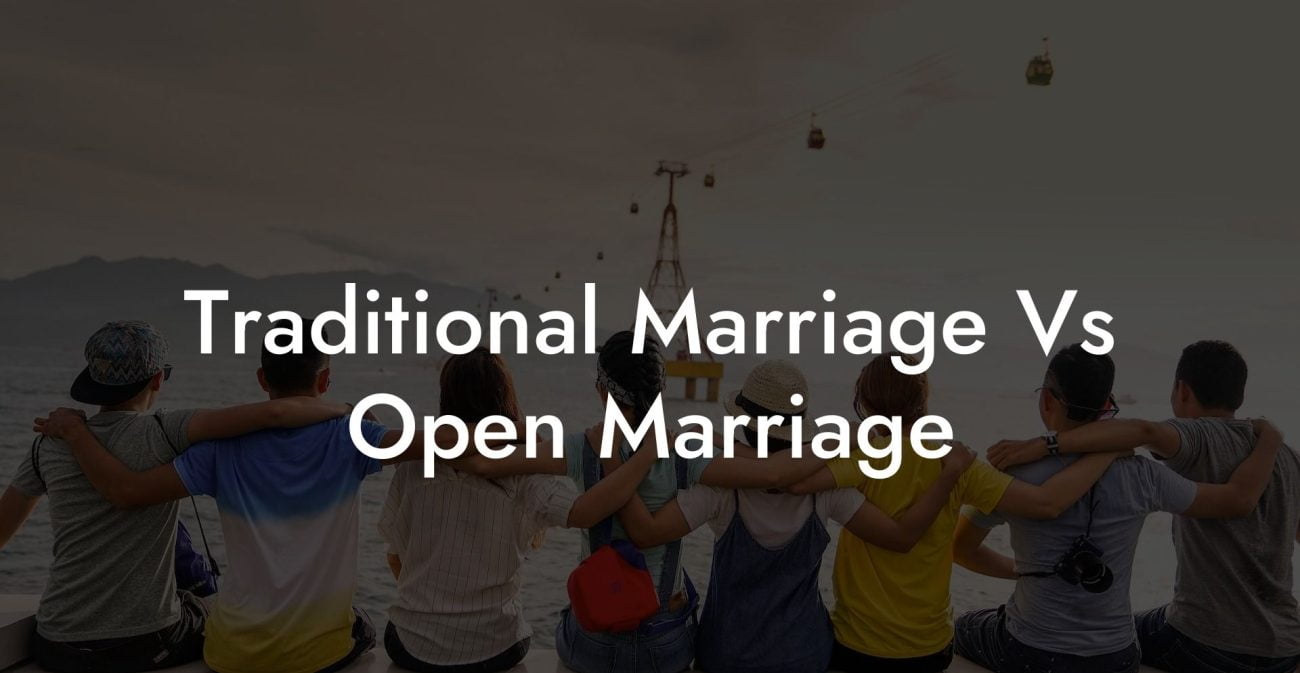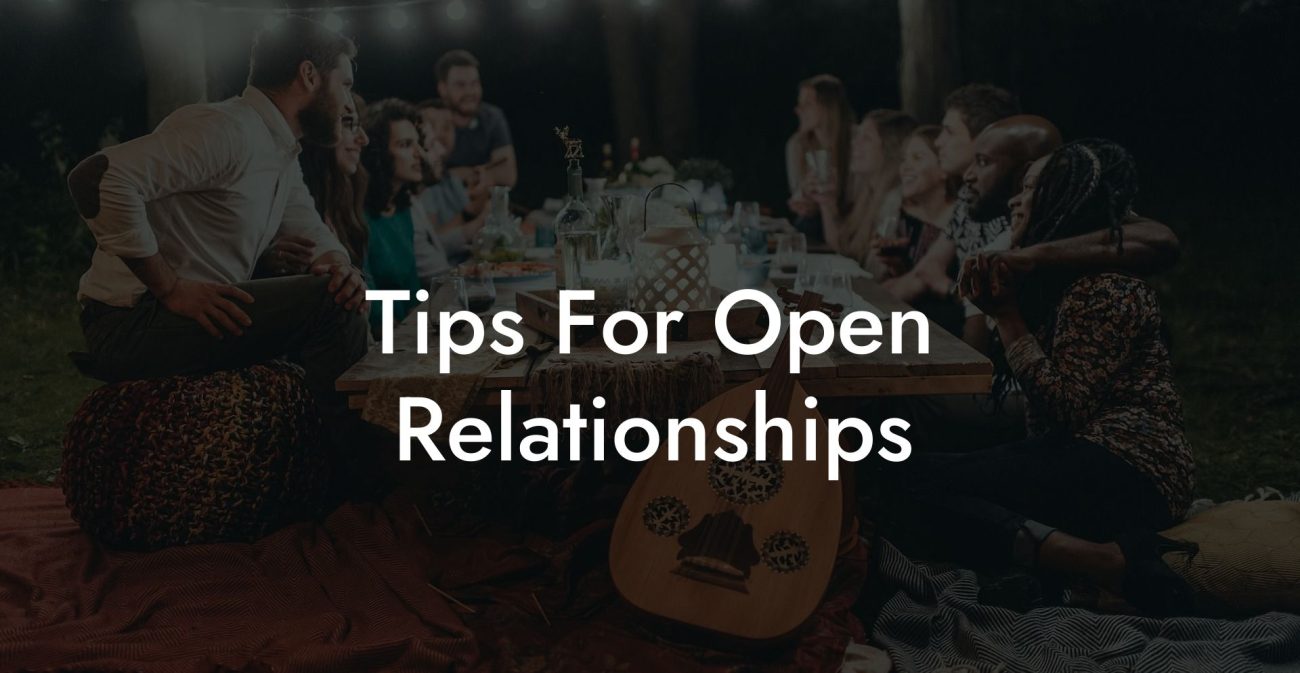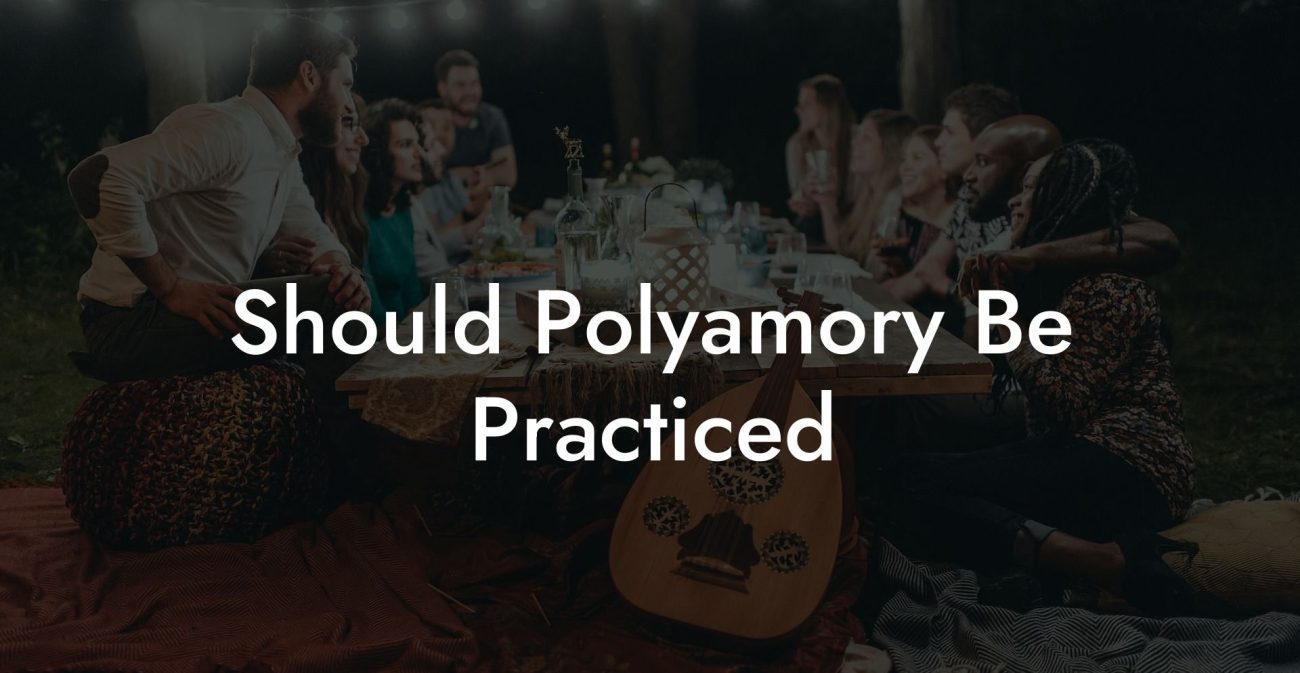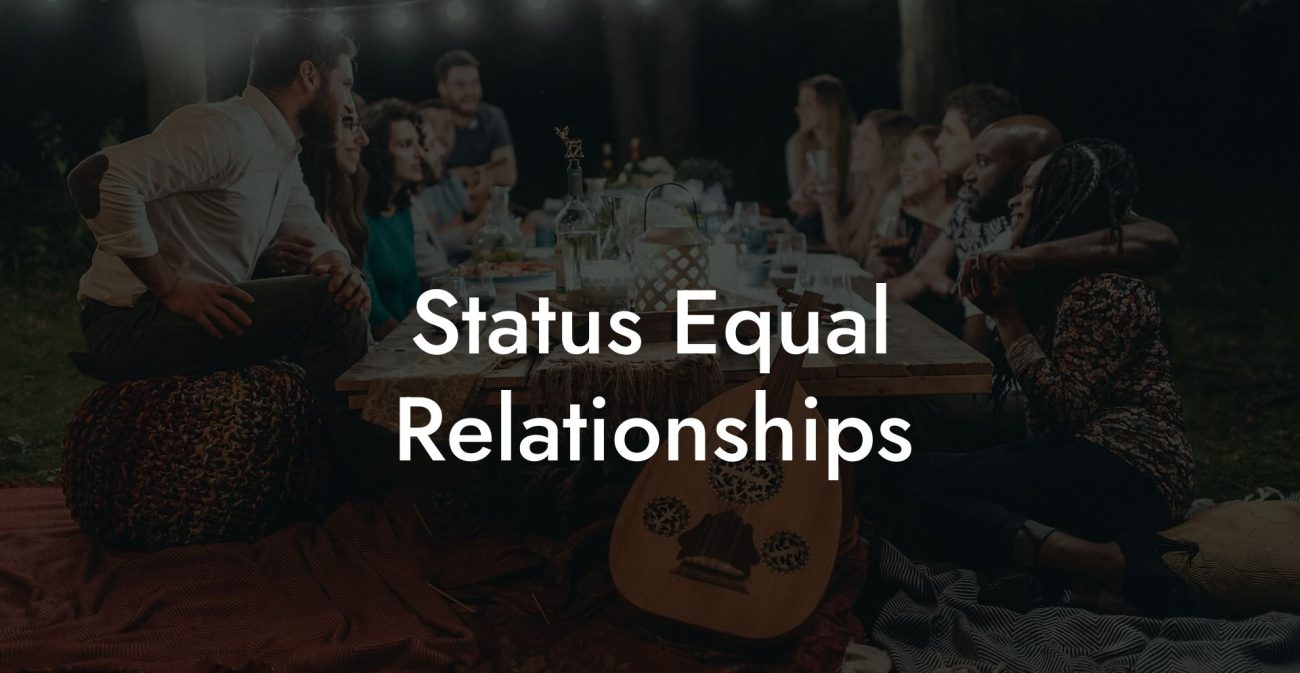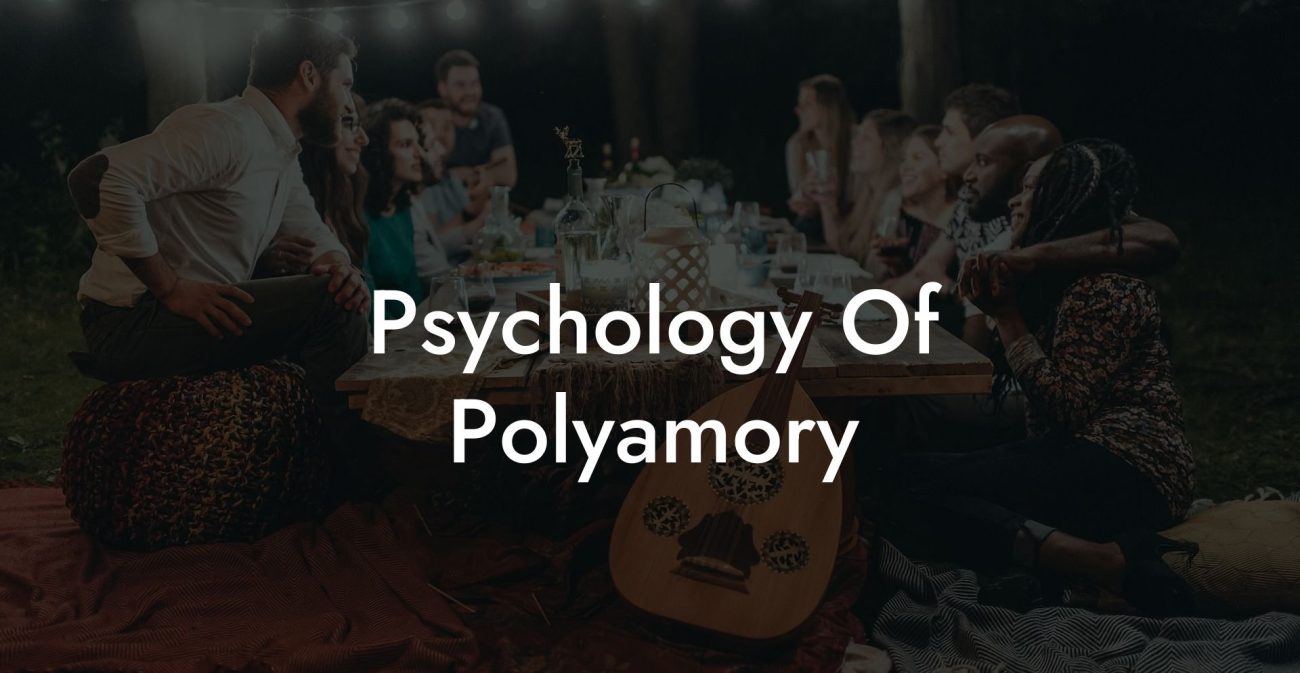Non-Hierarchical Open Relationships
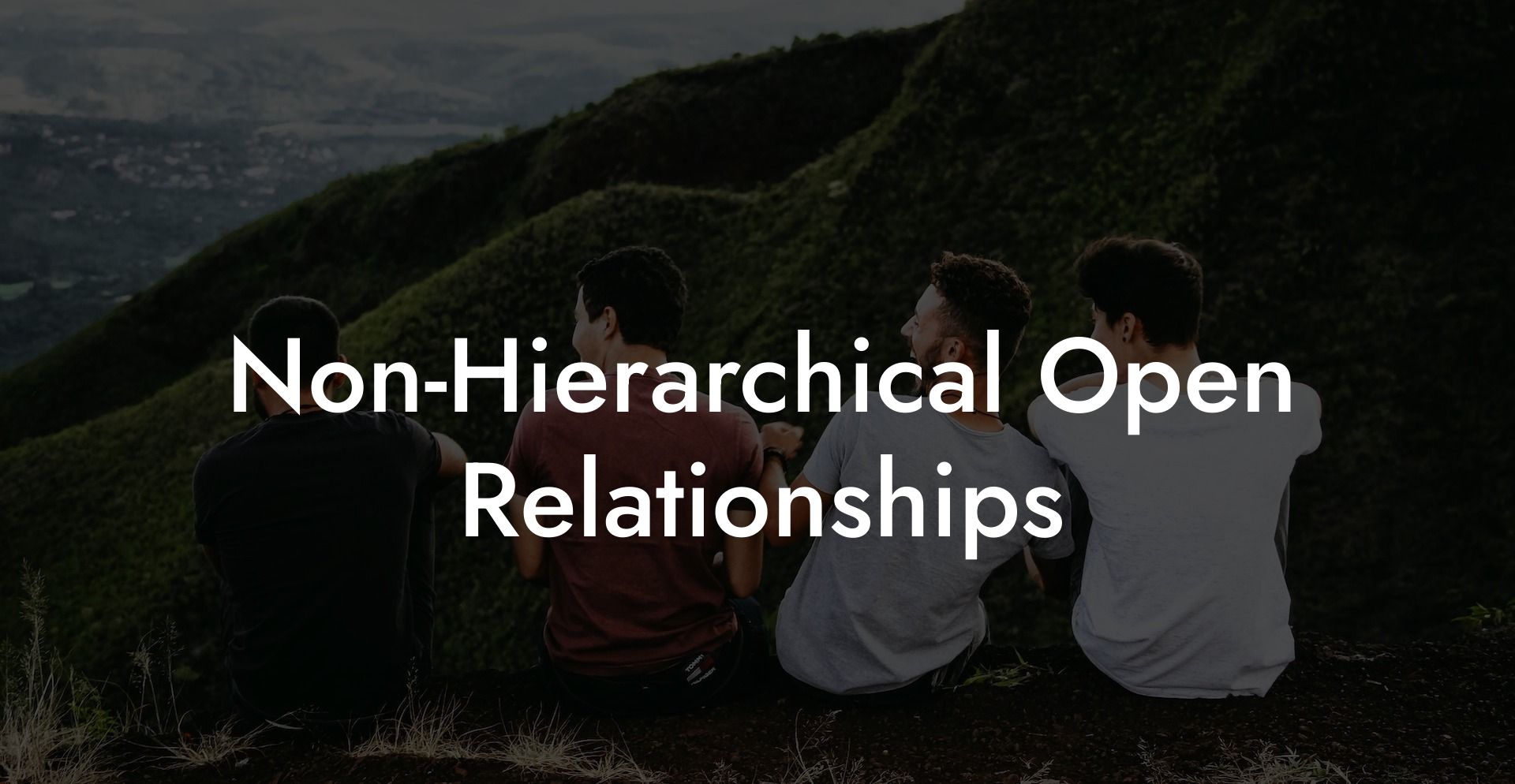
Imagine a world where every connection is like a vibrant mosaic, each piece equal in color and importance, creating a masterpiece of love without a single dominating hue. Welcome to Non-Hierarchical Open Relationships, where every partner is valued equally, and the traditional labels of "primary" and "secondary" simply don’t apply. This guide will take you on a deep dive into the principles, benefits, challenges, and practical strategies for nurturing non-hierarchical connections. Whether you’re new to ethical non-monogamy or a seasoned explorer of alternative relationships, get ready to discover how equality, open communication, and mutual respect can transform your love life into a beautifully balanced, ever-evolving work of art.
Quick Links to Useful Sections
- Understanding Non-Hierarchical Open Relationships
- Defining the Concept
- Key Characteristics of Non-Hierarchical Open Relationships
- Equality Among Partners
- Flexible Boundaries
- Open and Transparent Communication
- Shared Decision-Making
- Benefits of Non-Hierarchical Open Relationships
- Diverse Emotional Support
- Enhanced Personal Growth
- Freedom and Flexibility
- Fostering a Culture of Equality
- Challenges of Non-Hierarchical Open Relationships
- Complex Communication Dynamics
- Managing Jealousy and Insecurity
- Time and Energy Coordination
- Navigating External Perceptions
- Strategies for Thriving in Non-Hierarchical Open Relationships
- Establish Regular Communication Routines
- Set and Adapt Clear Boundaries
- Utilize Digital Tools for Organization
- Prioritize Self-Care and Personal Growth
- Build and Lean on a Supportive Community
- Practice Empathetic Conflict Resolution
- Real-Life Success Stories
- Case Study: The Harmony of the Trio
- Case Study: Alex’s Journey of Equitable Love
- Expert Insights on Non-Hierarchical Open Relationships
- FAQ: Your Non-Hierarchical Open Relationships Questions Answered
Understanding Non-Hierarchical Open Relationships
Defining the Concept
Non-hierarchical open relationships are a form of ethical non-monogamy where all partners share equal status, there is no primary partner who receives preferential treatment, and every relationship is negotiated with the same level of care and transparency. In this model, each connection is valued for its unique contribution, and the absence of a hierarchy fosters an environment of complete egalitarianism. This approach emphasizes that every partner’s needs and boundaries are equally important, allowing love to flow freely without the constraints of ranking.
Whether you’re in a triad, a quaternity, or any multi-partner configuration, non-hierarchical open relationships focus on creating a collective network where every voice is heard and every heart is cherished equally. Consent, clear communication, and mutual respect are the cornerstones that hold these relationships together.
Key Characteristics of Non-Hierarchical Open Relationships
Equality Among Partners
In non-hierarchical relationships, no partner is considered more important than another. Each relationship is managed on an equal footing, ensuring that all partners have an equal say in decisions and boundaries. This approach encourages an environment where every individual's contributions are recognized, and the emotional energy is distributed evenly.
Flexible Boundaries
Without a predefined ranking, boundaries in non-hierarchical setups are fluid and adaptable. Each partner negotiates their own set of guidelines, which can be revisited and revised as needs evolve. Whether it’s how much time you spend together, the level of physical intimacy you share, or the details you disclose about other relationships, these boundaries are created collaboratively and remain flexible to accommodate growth.
Open and Transparent Communication
Communication is the lifeblood of any relationship, but in a non-hierarchical context, it takes on even greater importance. With multiple partners, establishing clear channels of communication, both one-on-one and in group settings, is essential for ensuring that everyone feels informed, valued, and respected. Regular check-ins and honest dialogue help prevent misunderstandings and build a solid foundation of trust.
Shared Decision-Making
Decision-making in non-hierarchical relationships is a collective process. Instead of a single dominant voice, all partners contribute to discussions about scheduling, boundaries, and future plans. This inclusive approach fosters a sense of community and shared responsibility, where every partner feels empowered to express their needs and opinions.
Benefits of Non-Hierarchical Open Relationships
Diverse Emotional Support
One of the standout benefits of this model is the rich, varied emotional support network it creates. Each partner brings their own strengths and perspectives, allowing you to draw from a wide range of experiences. Whether it’s a listening ear during tough times or a burst of creative inspiration, the collective support can be both stabilizing and invigorating.
Enhanced Personal Growth
Navigating multiple equal partnerships requires ongoing self-reflection and emotional intelligence. As you interact with partners on an equal level, you learn more about your own needs, boundaries, and desires. This process of constant self-exploration not only enriches your relationships but also fosters significant personal growth.
Freedom and Flexibility
Non-hierarchical open relationships offer the freedom to love without the constraints of a rigid ranking system. You’re free to engage with each partner in a way that feels most natural and fulfilling, without worrying about fitting into a predetermined slot. This flexibility can lead to more authentic and adaptive connections that evolve with your personal journey.
Fostering a Culture of Equality
By embracing a non-hierarchical structure, you contribute to a broader cultural shift that values equality, shared responsibility, and mutual empowerment. This model challenges traditional power dynamics and encourages a more balanced, respectful way of relating, a philosophy that can extend well beyond romantic relationships.
Challenges of Non-Hierarchical Open Relationships
Complex Communication Dynamics
With multiple partners on equal footing, communication can become complex. Coordinating conversations and ensuring that every voice is heard can be challenging, especially when dealing with diverse schedules and varying communication styles. Misunderstandings may arise if clear channels and regular check-ins aren’t maintained.
Managing Jealousy and Insecurity
Even in an egalitarian setting, feelings of jealousy and insecurity can surface. Without a hierarchy to provide a default sense of security, it’s essential to address these emotions openly. This may require extra effort in fostering self-awareness and using effective communication strategies to validate each partner’s feelings.
Time and Energy Coordination
Balancing multiple relationships requires careful time management. With no single partner designated as the priority, it’s up to you to distribute your time and emotional energy in a way that feels fair and fulfilling. This can be challenging, particularly when personal and professional commitments compete for your attention.
Navigating External Perceptions
Non-hierarchical open relationships often face misunderstanding from those who are more accustomed to traditional relationship models. External judgments and cultural biases can add pressure and create moments of self-doubt. Building a supportive community is crucial to counteracting these external pressures.
Strategies for Thriving in Non-Hierarchical Open Relationships
Establish Regular Communication Routines
Regular check-ins are vital. Whether you opt for group meetings, one-on-one sessions, or a combination of both, ensure that everyone has a chance to share their feelings, review boundaries, and discuss any concerns. Digital tools like group chats, shared calendars, and video conferencing apps can facilitate these conversations.
Set and Adapt Clear Boundaries
Although the structure is non-hierarchical, clear boundaries are essential. Engage in open dialogue to define what each partner is comfortable with in terms of time, intimacy, and communication. Document these agreements digitally so that everyone can refer back to them, and schedule regular reviews to adjust boundaries as needed.
Utilize Digital Tools for Organization
Digital tools can streamline the management of multiple relationships. Use shared calendars (like Google Calendar), scheduling apps (such as Trello or Notion), and digital journals to keep track of commitments, important dates, and check-in times. These tools help prevent scheduling conflicts and ensure that each partner feels valued.
Prioritize Self-Care and Personal Growth
Your well-being is the foundation of any healthy relationship. Engage in regular self-care practices, whether it’s exercise, meditation, or pursuing hobbies, and encourage your partners to do the same. Self-reflection through journaling or therapy can help you understand your emotions better, manage jealousy, and maintain a balanced state of mind.
Build and Lean on a Supportive Community
Surround yourself with a network of like-minded individuals who understand non-hierarchical relationship dynamics. Join online forums, local meet-ups, and social media groups dedicated to ethical non-monogamy. A supportive community provides validation, practical advice, and a safe space to share experiences and challenges.
Practice Empathetic Conflict Resolution
When conflicts arise, approach them as opportunities for growth rather than threats. Use techniques like active listening, “I” statements, and, if necessary, mediation with a neutral third party. Recognize that disagreements are a natural part of any relationship and can lead to deeper understanding if handled with care.
Real-Life Success Stories
Case Study: The Harmony of the Trio
Consider the experience of a triad consisting of Sam, Riley, and Jordan, who chose to structure their relationship non-hierarchically. Rather than designating a primary partner, they established a system of regular group check-ins and individual conversations. By using a shared digital calendar and documenting their boundaries in a collaborative online document, they ensured that each partner felt equally valued. Despite occasional challenges with jealousy and scheduling, their commitment to open communication and mutual respect allowed them to build a resilient and deeply satisfying network of love.
Case Study: Alex’s Journey of Equitable Love
Alex, who has been in a non-hierarchical open relationship for several years, discovered that the key to success lay in flexibility and transparency. By fostering an environment where every partner was encouraged to share their feelings openly, Alex and their partners managed to navigate the complexities of multiple equal relationships. Regular self-reflection and community support helped Alex overcome moments of insecurity, leading to a relationship dynamic that is both dynamic and deeply fulfilling.
Expert Insights on Non-Hierarchical Open Relationships
Experts in relationship dynamics emphasize that non-hierarchical open relationships thrive on mutual respect, clear communication, and shared responsibility. Dr. Elena Rivera, a therapist specializing in ethical non-monogamy, explains, “In a non-hierarchical setting, every partner’s voice is equally important. This structure encourages a culture of openness where trust is built through consistent, honest dialogue and the willingness to adapt.”
Relationship coach Marcus Lee adds, “The beauty of non-hierarchical relationships is in their flexibility. When you remove the pressure of ranking partners, you allow for a more authentic expression of love and connection. It requires diligent communication and the ability to negotiate boundaries dynamically, but the rewards are immense.”
FAQ: Your Non-Hierarchical Open Relationships Questions Answered
1. What are non-hierarchical open relationships?
Non-hierarchical open relationships are a type of ethical non-monogamy where all partners are considered equal, with no designated primary or secondary roles.
2. How do non-hierarchical relationships differ from hierarchical ones?
In non-hierarchical relationships, no partner is prioritized over another. All relationships are managed on an equal footing, whereas hierarchical models designate a primary partner and assign varying levels of commitment to others.
3. What are the benefits of a non-hierarchical structure?
Benefits include equal emotional support, flexibility in relationship dynamics, enhanced communication, and a more inclusive, egalitarian approach to love.
4. What challenges might arise in non-hierarchical relationships?
Challenges include managing complex communication among multiple partners, coordinating time and energy without a clear hierarchy, and addressing jealousy or insecurity in an egalitarian context.
5. How important is communication in non-hierarchical relationships?
Communication is absolutely essential. Regular, transparent check-ins, both individually and in groups, help ensure that all partners feel heard and valued.
6. How do I set boundaries in a non-hierarchical relationship?
Set boundaries through self-reflection and open dialogue with all partners. Clearly define personal limits regarding time, intimacy, and communication, and revisit these boundaries regularly.
7. Can digital tools help manage non-hierarchical relationships?
Yes, digital tools such as shared calendars, scheduling apps, and digital journals are invaluable for coordinating time and maintaining clear communication among all partners.
8. How do I handle jealousy in a non-hierarchical context?
Address jealousy by engaging in honest conversations, using “I” statements, and practicing self-reflection. Professional counseling or support groups can also provide additional strategies.
9. How do non-hierarchical relationships foster personal growth?
By requiring continuous self-reflection, open communication, and the negotiation of boundaries, non-hierarchical relationships encourage individual development and a deeper understanding of your own emotional needs.
10. Where can I find more resources on non-hierarchical open relationships?
Look for books like "The Ethical Slut" and "More Than Two", podcasts such as “Multiamory,” and online communities on Reddit and Facebook dedicated to ethical non-monogamy.
Resources and Community Support: Your Next Steps in Embracing Non-Hierarchical Open Relationships
- Books: Dive into "The Ethical Slut" and "More Than Two" for a comprehensive look at ethical non-monogamy and egalitarian relationship structures.
- Podcasts: Listen to "Multiamory" and other polyamory podcasts that discuss real-life experiences and strategies for managing non-hierarchical relationships.
- Online Communities: Engage with polyamory forums on Reddit (e.g., r/polyamory) and Facebook groups dedicated to ethical non-monogamy for support and advice.
- Workshops and Webinars: Attend events focused on communication, boundary-setting, and relationship management to further hone your skills.
- Therapy and Counseling: Seek guidance from professionals experienced in non-monogamous dynamics to help navigate challenges and support personal growth.
Non-hierarchical open relationships offer a refreshing, egalitarian approach to love, one that celebrates the uniqueness of every connection without imposing artificial rankings. By embracing open communication, flexible boundaries, and continuous self-reflection, you can build a network of relationships that is both balanced and deeply fulfilling.
Lost & confused by all of the terms, types and seemingly made up 3 letter acronyms?? We've got you. Check out our Ethnical Non-Monogamy Dictionary >>
Useful Interruption: Not sure which relationship vibe fits you best? Take our Relationship Test, it’ll give you the real insight into your natural relationship style. Then, dive into our binge-worthy guides (from the tried-and-true to the “wait, that’s a thing?”) and find the perfect relationship type for your life:
- Monogamy
- Open Relationships
- Ethical Non-Monogamy
- Solo Polyamory
- Non-Hierarchical Polyamory
- Hierarchical Polyamory
- Relationship Anarchy
- Swinging
Now back to the main article but yeah take the test...

